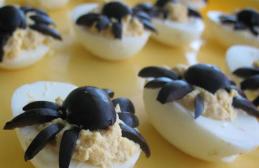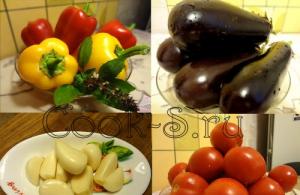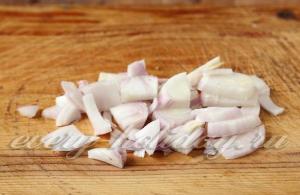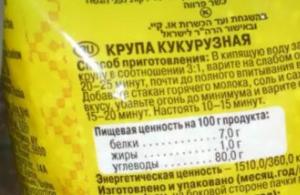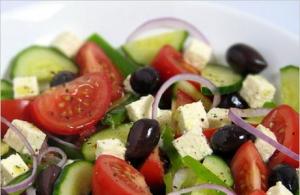Quite often in culinary recipes there is an instruction to “sprinkle the dish (mainly salads) with lemon juice.” Citrus fruits are generously added to baked goods. Sour lemon juice makes it less cloying. Citrons are added to both dough and creams. They use both the zest of the exotic fruit and candied pieces of pulp and skin. But most often the ingredient in dishes is lemon juice. It is added both to soups (for example, solyanka) and to drinks - tea, alcoholic and refreshing cocktails. This article is devoted to one question: is it possible to use acid? And if so, how to introduce white crystals into a dish? What are the proportions? What needs to be done to make the dish taste as if it contained natural lemon juice? You will read about this below.
What is citric acid
What exactly is this white crystalline powder? Undoubtedly, this is a synthetic material. And before we clarify the question of whether lemon juice can be replaced with citric acid, we must establish the connection between these two products. Does synthetic powder have anything in common with citrus fruits? Citric acid was first extracted in history by the Swedish pharmacist Karl Scheele in 1784. How did he get it? He isolated it from the juice of unripe lemons. As you can see, there is a direct connection between these products. The resulting powder is a tribasic carboxylic acid. It dissolves perfectly in water when it reaches at least eighteen degrees. Citric acid also combines well with ethyl alcohol. Therefore, it can be used to make homemade tinctures and vodkas. But the powder is poorly soluble in diethyl ether.

Industrial production of citric acid
Any reasonable person will ask: if the powder is extracted from citrus fruits, then why is it so much cheaper than fruit? After all, an eighteenth-century apothecary evaporated natural juice to obtain white crystals. Then they began to add shag biomass to lemon juice. This plant also contains large amounts of this acid. In modern industrial production, powder is obtained by biosynthesis from molasses and sugar using mold fungus strains. Citric acid is used not only in cooking, but also in medicine (including to improve metabolism), cosmetology (as an acidity regulator) and even construction and oil industry. The global production volume is more than one and a half million tons. And about half of this amount is produced in China. In light of this, the question of whether it is possible to replace lemon juice with citric acid seems even more relevant. Especially if the label says: “Made in China”.

Benefits of citric acid
Synthetic powder is widely used in the food industry and is labeled as E330-E333. But is this flavoring additive completely safe? Is it possible to replace lemon juice with citric acid without harm to the body? The powder is used in the food industry, not only to improve the taste of the product. Citric acid prevents the development of microorganisms, the appearance of mold and unpleasant odors. Therefore, E330 is also used as a preservative. Despite the fact that citric acid is no longer extracted from fruits, it, like citrus fruits, improves vision, strengthens the immune system and has a positive effect on the digestive system. Since it speeds up metabolism, it is used in diets to reduce excess weight. This substance removes toxins, waste, and harmful salts from the body.

Harm of citric acid
Not all people can tolerate citrus fruits. These fruits can cause an allergic reaction. Likewise, citric acid is unacceptable to some people. It should be used with caution by patients with gastritis and stomach ulcers. But we wondered: can citric acid replace lemon juice? The time has come to answer it. Yes maybe. But in the case of powder, care must be taken not to make the solution too concentrated. After all, then this can lead to discomfort in the stomach, heartburn, colic and vomiting. Undissolved powder should not be eaten as it causes burns to the mucous membranes.
Subtropical fruits cannot be called cheap. And most recipes only require a couple of drops or a teaspoon of lemon juice. The rest sits in the refrigerator for a long time, dries and withers. Whereas citric acid in a bag can be stored for years. And it costs mere pennies. Therefore, experienced housewives, when asked whether citric acid will replace lemon juice, usually answer: “Yes! And vinegar too! It can also be used to wash metal surfaces contaminated with limescale and rust.”
As for cooking, the range of dishes in which you can use both citrus juice and citric acid is quite wide. If you are kneading dough, you can mix a small amount of synthetic powder with flour. In other cases, the acid crystals must be dissolved in warm water until the concentration of regular lemon juice is reached. The proportions are like this. A small pinch (some recipes recommend on the tip of a knife) per fifty milliliters of warm water. The solution should be cooled.
Citric acid is a product that can be found in any home. It is widely used both for preparing various dishes and in everyday life, as a cleaning agent or as a component for whitening lotion and hair rinse. Some simple tips will tell you how to replace citric acid if it has run out.
Curious! Citric acid was first obtained from unripe lemons, hence its name. The first to synthesize it was the Swedish pharmacist Karl Schleele in 1784. Now it is obtained synthetically from beets.
Citrus fruits instead of citric acid
- The most natural alternative to citric acid when preparing various dishes is regular lemon or lime.
On note! The juice of 1 lemon can replace 1 teaspoon of citric acid. When preparing desserts, to replace citric acid, a few drops to 1-2 teaspoons of lemon juice will be enough.

- If you don’t have lemon on hand, oranges or tangerines will do the job of replacing citric acid.
On a note! Citrus fruits will not only provide the necessary acidity to the dish, but will also enrich its aroma and taste.
The most successful option would be to replace citric acid with citrus fruits when preparing:
- creams: protein, butter, custard;
- sweets;
- meringue;
- mousse;
- syrups;
- baking powder for dough;
- fillings for pies, pastries and cakes.
Citric acid is added to the dough to give baked goods a pleasant taste with a slight sourness. Using citrus zest, vanillin or cinnamon instead, you can get not only tasty, but also very aromatic baked goods.
On a note! A few drops of lemon juice will allow you to easily whip the whites into a strong foam, prevent it from settling, and make it snow-white.
Citric acid, being an excellent anti-crystallizer, is an integral component of syrup and fondant recipes. Thanks to its addition in a strictly defined concentration, you can get a thick, non-candied syrup that is perfectly whipped into fudge. Replacing the acid with lemon, you will have to play around to achieve the required concentration of acid in the product.

How to replace citric acid in canning
When preparing compote, jam or jam from serviceberry, quince, gooseberry or chokeberry, you cannot do without citric acid, because it is what gives them their piquant sourness. In this case, instead of citric acid, you can use orange or lemon zest and citrus juice or applesauce and zest.
Sour berries instead of citric acid
Citric acid is a component often used in preservation to highlight the taste of sweet berries and fruits or to protect compotes and jams from spoilage. Some recipes for canned and pickled vegetables also recommend using citric acid as a preservative. Typically, recommendations to replace vinegar with citric acid are associated with gastrointestinal problems. But if citric acid is not on hand, then you can use whole berries instead:
- red currant;
- cranberries;
- lingonberries.
Sour berries will add an original flavor to pickled cucumbers, zucchini, peppers, and tomatoes.

On a note! Instead of citric acid when canning vegetables, you can use the following in a 1 liter jar:
- 200 g red currants or,
- 200 g rowan or,
- 100 g lingonberries or,
- 100 g cranberries or,
- 100 g Chinese lemongrass or,
- 0.5 liters of fresh tomato juice or,
- 100 g sorrel or,
- 1 sour apple or
- ½ small bunch of grapes or,
- juice of ½ lemon.
The berries are washed and placed in jars with vegetables, and it is recommended to pre-boil and puree the sorrel, and then add it to the jars. Based on sorrel decoction, you can prepare an excellent brine for pickling cucumbers.
By using sour berries, fruits and vegetables as natural preservatives, homemade preparations will become not only tastier, but also healthier.

Natural juice instead of citric acid
Juices obtained from fruits and berries contain a significant amount of organic acids and are quite capable of replacing citric acid in the preparation of some dishes:
- desserts;
- compotes, jelly and other drinks;
- jams and marinades;
- sauces and gravy.
On a note! Citric acid is often used as an essential component of meat marinades. For example, a leg of lamb is marinated in a marinade with the addition of citric acid: ¼ teaspoon per 2 kg of meat with bone. In this case, you can use grape or pomegranate juice instead of acid. They will not only make the meat tender, but also add a pleasant taste.
For these purposes, it is better to use natural, unsweetened juice:
- grape;
- pomegranate;
- cherry;
- cranberry;
- apple.
On a note! Sour fruit or berry juice, added when cooking jam, will allow the fruit not to lose its attractive appearance and the jam not to become sugary.

Vinegar instead of citric acid
When preparing marinade for cucumbers and other vegetables, you can use vinegar instead of citric acid:
- apple;
- wine;
- dining room
Natural fruit vinegar, obtained by microbiological method, retains all the bioactive substances contained in the fruit, so replacing the acid with natural fruit vinegar will only bring health benefits.

Apple and wine vinegar can also be used instead of citric acid when preparing fruit and berry dishes. It will be enough to add 1-2 teaspoons of fruit vinegar at the end of cooking.
On a note! 5 teaspoons of 3% vinegar can replace 1/2 teaspoon of citric acid. 4 teaspoons of 9% vinegar will replace 1 teaspoon of citric acid.
In everyday life, citric acid is actively used to descale teapots. In this situation, table vinegar and soda can replace it.

As you can see, there are many ways to replace citric acid. Some of them, in their qualities, not only fully compensate for the lack of citric acid, but also improve the taste and aroma of the dish. In some cases, replacing citric acid is quite troublesome, since it requires experience to adjust the desired percentage of acidity of the dish.
How to replace citric acid?
If you need to replace citric acid in some baking or cooking some other food, you can use regular lemon juice. You just need to take a lemon, cut it and squeeze out the juice.
Also, a good substitute is vinegar, either apple cider vinegar or plain vinegar.
It seems to me that squeezed sorrel juice or currant juice will be very useful and the taste is original and beneficial
If for culinary reasons, I replace apple cider vinegar, or lemon, or plain vinegar. Basically, any culinary acid up to wine vinegar.
Depending on the case in which you are trying to replace it. Most often, lemon juice is replaced with citric acid. Obviously in your case you need to do the opposite if it does no harm.
Lemon juice is the best substitute for citric acid in cooking. This method is not suitable for household needs (cleaning dishes from scale), as you will need too much juice. For seaming, you can also use lemon or cranberry juice; it also contains enough acid.
If you are going to use citric acid as a kind of anti-scale agent, then it is difficult to come up with or recommend a better substitute than acetic acid. And in combination with baking soda, any kettle will shine with pristine purity.
If citric acid is used for canning, then sour berries can be recommended as a replacement.
For example, cucumbers can be preserved with red currants, excluding vinegar from the recipe.
Redcurrant juice! This is what you can use to replace lemon juice, and therefore citric acid.)
Citric acid can be replaced with apple cider vinegar. Usually, if you have a bag of citric acid at home, you can forget about it because of its small size; it will remain in the kitchen, on a shelf among other spices and seasonings. And the bottle is always visible. When preserving cucumbers, tomatoes, zucchini, and bell peppers, I add apple cider vinegar.
Well, what can replace it with? Lemon, of course, or lemon juice.... If you bake, then in some cases you can replace it with table vinegar. If the recipe specifies powdered acid, then this proportion is 1 teaspoon of acid equal to 1 lemon.
If you want to replace citric acid in order to prevent scale from forming in the washing machine, then in this case the ideal replacement option is acetic acid.
If you want to replace citric acid in cooking, you can use ordinary lemon.
If you want to replace citric acid in a recipe, then it is logical that the original source, that is, lemon, will help you with this. This will be even more beneficial for the body. When baking, try replacing lemon juice with regular table vinegar.
I usually replace citric acid with lemon juice; you can also replace it with vinegar. Some people use citric acid to clean the kettle; you can also add table vinegar or baking soda.
If you need it in the dough and there are no lemons, maybe there are oranges or tangerines in the house.
You can use lemon by simply squeezing a little of its juice. You can also use regular vinegar, it’s also an acid, just don’t overdo it, add it gradually so as not to overfill it. But the taste will certainly change.
Let's talk about those acids that we most often use in food, for canning or for acidifying foods.
Many people have problems with how to dilute vinegar in the required proportion, because vinegar essence contains 70% acid, and recipes require a 9% or even 5% vinegar solution.
We’ll also tell you how to replace your usual vinegar with apple cider vinegar or lemon juice?
How to dilute vinegar essence? (to get vinegar)

How to dilute vinegar from 70% vinegar essence:
9% vinegar, you need to take one part of the essence and add seven parts of water (1 tablespoon of essence and 7 tablespoons of water)
6% vinegar - add 11 parts of water to one part of essence (1 tablespoon of essence and 11 tablespoons of water)
5% vinegar - add 13 parts of water to one part of essence (1 tablespoon of essence and 13 tablespoons of water)
4% vinegar - add 17 parts of water to one part of essence (1 tablespoon of essence and 17 tablespoons of water)
3% vinegar - add 23 parts water to one part essence (1 tablespoon essence and 23 tablespoons water)
So, if you need 1 tablespoon of 70% vinegar essence, but you only have 5% vinegar, and its concentration is 13 times less, then you need to add 13 tablespoons of 5% vinegar.
Another point to consider is that if the recipe says 1 tablespoon of vinegar essence 70%, and you replace the essence with vinegar in the required proportion, then take not 1 liter of water, but several tablespoons less. That is, 5% vinegar 7 tablespoons and MINUS 13 tablespoons of water.
If you need to add 1 tablespoon of 70% vinegar essence, and you only have 9% vinegar, then you need to add 7 tablespoons of 9% vinegar.
Table vinegar (9%) can be replaced with apple cider vinegar.

But you need to understand that apple cider vinegar is sold at 5%, that is, to use it instead of 9% vinegar, you will need 2 times more apple cider vinegar. Instead of 1 tablespoon of 9% vinegar, take 2 tablespoons of apple cider vinegar.
Apple cider vinegar, grape (wine), rice vinegar, balsamic vinegar and others are most often used NOT for canning, but for dishes (borscht, salads, dressings) or marinating meat and fish. Since they still have their own specific taste, introduce them into your family’s diet carefully, because as you know, we are often conservative in our tastes, especially children.
You need to be even more careful if someone in the family has gastritis, ulcers or colitis, as well as
How to use citric acid for canning.
Most often in recipes you can find 2 tablespoons of bottled lemon juice or 1/2 teaspoon of lemon powder per 1 liter of water or for ready-made canned food per liter jar. For a half-liter jar (for example, tomato juice), you will need 1 tablespoon of lemon juice from a bottle or 1/4 teaspoon of dry lemon powder.
Please note that bottled lemon juice and freshly squeezed lemon juice are not the same thing. And to dress the salad, instead of one tablespoon of 6% vinegar, you will need two tablespoons of freshly squeezed lemon juice.
How to dilute dry citric acid?
If we need to dilute citric acid instead of vinegar, which is written in the recipe, then use our instructions. We indicated the percentage of vinegar and the amount of citric acid (dry).
Dilute citric acid crystals with water in the following proportion:
- 1 tablespoon of dry citric acid per 2 tablespoons of water. You will get a substitute for 70% vinegar essence.
- 1 teaspoon of dry citric acid per 14 tablespoons of water. You will have a substitute for 9% vinegar.
- 1 teaspoon of dry citric acid per 22 tablespoons of water. You will have a substitute for 6% vinegar.
- 1 teaspoon of dry citric acid per 26 tablespoons of water. You will have a 5% vinegar substitute.
- 1 teaspoon of dry citric acid per 34 tablespoons of water. You will have a substitute for 4% vinegar.
- 1 teaspoon of dry citric acid per 46 tablespoons of water. You will have a substitute for 3% vinegar.

Consider an alternative to citric acid for any application: baking, canning, cleaning, cleaning the kettle and washing machine, washing your hair, etc.
Lemon juice
A complete alternative. The juice from one medium lemon is 5 grams. citric acid.
Vinegar
Full faceted glass (250 ml) 9% vinegar = 1 tsp. citric acid + glass of water.
330 ml 6% vinegar = 1 tsp. citric acid + 330 ml water.
1 tbsp. l. 70% vinegar = 0.5 tbsp. l. lemons + 1 tbsp. l. water.
Wine
Wines have different acidity, which depends on the manufacturer and type of wine, so the amount of wine to replace will have to be selected by eye. On average, 300 ml of wine equals 0.5 tsp. citric acid + 300 ml water.
Baking powder
And him. This option is only suitable for baking. Baking powder already contains citric acid. If the recipe calls for baking soda, then this ingredient should be omitted. 1 gr. citric acid = 7 g. baking powder.
Sour berries
5 gr. citric acid = 400 ml red currant juice, 400 ml rowan, 200 ml lingonberries, 200 ml cranberries, 200 ml Chinese lemongrass, 200 ml sorrel, 200 ml grapes, 100 ml sour apple and 1 l. tomato juice.
Soda
And her. For cosmetic purposes only, for example, to descale a kettle or disinfect a container.
You might be interested in:
If you want to perk up, but don't have energy drinks or don't want to take them because they are harmful, then consider simple, proven energy drinks. ...



